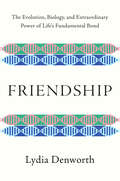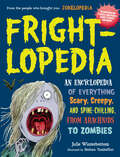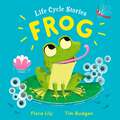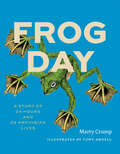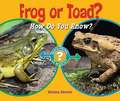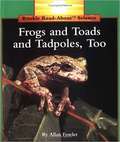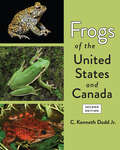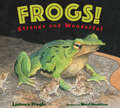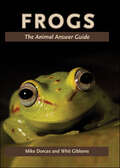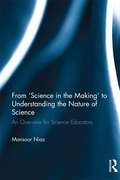- Table View
- List View
Friending the Past: The Sense of History in the Digital Age
by Alan LiuCan today’s society, increasingly captivated by a constant flow of information, share a sense of history? How did our media-making forebears balance the tension between the present and the absent, the individual and the collective, the static and the dynamic—and how do our current digital networks disrupt these same balances? Can our social media, with its fleeting nature, even be considered social at all? In Friending the Past, Alan Liu proposes fresh answers to these innovative questions of connection. He explores how we can learn from the relationship between past societies whose media forms fostered a communal and self-aware sense of history—such as prehistorical oral societies with robust storytelling cultures, or the great print works of nineteenth-century historicism—and our own instantaneous present. He concludes with a surprising look at how the sense of history exemplified in today’s JavaScript timelines compares to the temporality found in Romantic poetry. Interlaced among these inquiries, Liu shows how extensive “network archaeologies” can be constructed as novel ways of thinking about our affiliations with time and with each other. These conceptual architectures of period and age are also always media structures, scaffolded with the outlines of what we mean by history. Thinking about our own time, Liu wonders if the digital, networked future can sustain a similar sense of history.
Friendly Biology (christian Worldview Edition)
by Joey Hajda Lisa HajdaFriendly Biology opens the world of biology to high school students in a gentle, non-intimidating manner. Students are led through meaningful, well-written lessons and lab activities with the goal of attaining a greater respect for the beauty and complexity of living things.Topics covered include:Characteristics common to all living things;Basic chemistry as it pertains to living things;The roles of carbohydrates, lipids, proteins and nucleic acids in living systems;Cytology;Mitosis and meiosis;Chromosome duplication and protein synthesis;The importance of pH in living systems;Methods of reproduction;Mendelian genetics;Taxonomy;A survey of members of each kingdom of living things with emphasis placed on various classes and orders of importance;An overview of all body systems of humans andEcology of living things.28 lessons with lab activities included.Worksheet pages sold separately in Student Workbook. Tests sold separately in Tests and Answer Keys Booklet.
Friendroid
by M. M. VaughanStranger Things meets robots in this sweet story about an unlikely friendship between two boys—one human, one android. <P><P>Eric Young is an android, but he doesn’t know. He does know that he’s just moved to Ashland, so it’s important to make the right kind of friends—the kind that would be interested in skateboarding and the new Slick sneakers his Uncle Martin sends him. Danny Lazio doesn’t have any friends, but he doesn’t care. <P><P>Even if his classmates don’t accept him, he still has Land X, the online role play game that he’s actually really good at. But then Eric takes an interest in Land X, and suddenly Danny thinks he might have found a real friend…if he can figure out the mystery behind Eric’s sudden disappearances and strange lifestyle. It becomes harder to ignore the weird events that happen only around Eric. <P><P>But uncovering the secret behind Eric’s identity is an act that might cost them both as powerful forces soon move in around them. This heartfelt story about friendship and what it means to be human is sure to tug at your soul—or your soul-chip if you’re like Eric.
Friends From The Forest
by Joy AdamsonFrom the Book Jacket: Foreword by Juliette Huxley In these two animal studies we have a last, touching testimony of Joy Adamson's gift for eliciting trust from creatures of the wild. The home of her later years, Elsamere, is a bungalow set on large wooded grounds bordering on the remnants of wild forest. To Joy's delight, two fascinating sets of visitors settled near Elsamere: picturesque Colobus monkeys, with their marvelously expressive faces, and a family of Verreaux's eagle owls, the third largest owl in the world and the largest in Africa, with a wingspan of twenty-three inches.
Friendship 7
by Colin BurgessIn this spellbinding account of an historic but troubled orbital mission, noted space historian Colin Burgess takes us back to an electrifying time in American history, when intrepid pioneers were launched atop notoriously unreliable rockets at the very dawn of human space exploration. A nation proudly and collectively came to a standstill on the day this mission flew; a day that will be forever enshrined in American spaceflight history. On the morning of February 20, 1962, following months of frustrating delays, a Marine Corps war hero and test pilot named John Glenn finally blazed a path into orbit aboard a compact capsule named Friendship 7. The book's tension-filled narrative faithfully unfolds through contemporary reports and the personal recollections of astronaut John Glenn, along with those closest to the Friendship 7 story, revealing previously unknown facts behind one of America's most ambitious and memorable pioneering space missions. Friendship 7. The book's tension-filled narrative faithfully unfolds through contemporary reports and the personal recollections of astronaut John Glenn, along with those closest to the Friendship 7 story, revealing previously unknown facts behind one of America's most ambitious and memorable pioneering space missions. Friendship 7 story, revealing previously unknown facts behind one of America's most ambitious and memorable pioneering space missions.
Friendship: A Natural History
by Lydia DenworthA Next Big Idea Club Must-Read Nonfiction Book of Winter 2020 A revelatory investigation of friendship, with profound implications for our understanding of what humans and animals alike need to thrive across a lifetime. The phenomenon of friendship is universal and elemental. Friends, after all, are the family we choose. But what makes these bonds not just pleasant but essential, and how do they affect our bodies and our minds? In Friendship, science journalist Lydia Denworth takes us in search of friendship’s biological, psychological, and evolutionary foundations. She finds friendship to be as old as early life on the African savannas—when tribes of people grew large enough for individuals to seek fulfillment of their social needs outside their immediate families. Denworth sees this urge to connect reflected in primates, too, taking us to a monkey sanctuary in Puerto Rico and a baboon colony in Kenya to examine social bonds that offer insight into our own. She meets scientists at the frontiers of brain and genetics research and discovers that friendship is reflected in our brain waves, our genomes, and our cardiovascular and immune systems; its opposite, loneliness, can kill. At long last, social connection is recognized as critical to wellness and longevity. With insight and warmth, Denworth weaves past and present, field biology and neuroscience, to show how our bodies and minds are designed for friendship across life stages, the processes by which healthy social bonds are developed and maintained, and how friendship is changing in the age of social media. Blending compelling science, storytelling, and a grand evolutionary perspective, Denworth delineates the essential role that cooperation and companionship play in creating human (and nonhuman) societies. Friendship illuminates the vital aspects of friendship, both visible and invisible, and offers a refreshingly optimistic vision of human nature. It is a clarion call for putting positive relationships at the center of our lives.
Frightlopedia: An Encyclopedia of Everything Scary, Creepy, and Spine-Chilling, from Arachnids to Zombies
by Julie WinterbottomHere’s the book for kids who love scary stuff, whether it’s telling ghost stories around a campfire, discovering the origins of various vampires, monsters, and witches, or reading creepy tales under the covers with a flashlight. Combining fact, fiction, and hands-on activities, Frightlopedia is an illustrated A-Z collection of some of the world’s most frightening places, scariest stories, and gruesomest creatures, both real and imagined. Discover Borneo’s Gomantong Cave, where literally millions of bats, cockroaches, spiders, and rats coexist—in pitch darkness. Learn about mythical creatures like the Mongolian Death Worm—and scarily real ones like killer bees, which were accidentally created by scientists in the 1950s. Visit New Orleans’s Beauregard-Keyes house, where Civil War soldiers are said to still clash in the front hall. Plus ghost stories from around the world, a cross-cultural study of vampires, and how to transform into a zombie with makeup. Each entry includes a “Fright Meter” measurement from 1 to 3, because while being scared is fun, everyone has their limit. A 2017 YALSA Quick Pick for Reluctant Readers.
Fringe-ology: How I Tried to Explain Away the Unexplainable—And Couldn't
by Steve Volk“Fringe-Ologybrings a poet’s eye to the frayed edges between the known and unknown, beliefand skepticism. . . . A dive into the paranormal even a hardcore skeptic like myselfcan enjoy.” —Mat Johnson, author of PymTakea strange and unsettling trip into the heart of the paranormal universe asjournalist Steve Volk tries to answer some of the most fundamental questions atthe heart of human existence. Fringe-ology will appeal to anyone curiousbut cautious about reports of paranormal experiences, psychic phenomena, andother unexplainable events—anyone who has ever wondered about the existence anafterlife, intelligent life on other planets, or the limits of extrasensoryperception. For fans of Fringe, Mythbusters,Medium, Heroes, Nova, and Lost, Volk’sscintillating journey into mystery illuminates the furthest boundaries ofpossibility and wonder.
Frog (Life Cycle Stories #1)
by Flora LilyMeet Frog. Frog likes splashing in the pond, leaping from her lily pad and catching insects on her long, curly, whirly tongue. And she loves to RIBBITTTTT. But Frog has a secret . . . Before she could do ANY of these things, she was just one of a million teeny, tiny eggs in the furthest corner of the pond. So how did that little egg come to be Frog? Join Frog on an adorable adventure in the pond, full of facts about the different life stages of frogs - from egg to tadpole to froglet to frog - and watch the life cycle begin all over again.
Frog Day: A Story of 24 Hours and 24 Amphibian Lives (Earth Day)
by Marty CrumpAn illustrated hourly guide that follows twenty-four frogs as they eat, find mates, care for their young, and survive our harsh and changing planet. In this short book, celebrated biologist Marty Crump leads readers on a worldwide field trip in search of frogs. Each chapter of Frog Day covers a single frog during a single hour, highlighting how twenty-four different species spend their time. Our day begins at midnight in Indonesia, with the rustle of leaves above. It’s not a bird, but Wallace’s flying frog, using its webbed feet and emerald-green skin flaps to glide through the forest canopy. In the early hours of the morning, we hear a horned marsupial frog “bopping” and a wood frog “quacking” to attract mates. At six o’clock in the morning, beneath a streetlight in Honolulu, we meet a corpulent, invasive cane toad slurping insects—and sometimes snakes, lizards, turtles, birds, and mice. At noon, we watch parenting in action as an African bullfrog bulldozes a path through the mud to free his tadpoles from a drying pond. At dusk, in a Peruvian rain forest, we observe “the ultimate odd couple”—a hairy tarantula and what looks like a tiny amphibian pet taking shelter in the spider’s burrow. Other frogs make a tasty meal for this tarantula, but the dotted humming frog is a friend, eating the ants that might otherwise make a meal of the tarantula’s eggs. For each hour in our Frog Day, award-winning artist Tony Angell has depicted these scenes with his signature pen and ink illustrations. Working closely together to narrate and illustrate these unique moments in time, Crump and Angell have created an engaging read that is a perfect way to spend an hour or two—and a true gift for readers, amateur scientists, and all frog fans.
Frog Life Cycle
by Justin Mccory MartinLearn more about how frogs grow, change and live in this science reader.
Frog Or Toad? How Do You Know Which Animal is Which?
by Melissa StewartHow can you tell a frog from a toad? What is the difference? Find all the tips and hints you need to tell these two animals apart! Trained as both a scientist and journalist, Melissa Stewart is the award-winning author of more than 100 books for young readers. While gathering information for her books, Melissa has explored tropical forests in Costa Rica, gone on Safari in Kenya and Tanzania, and swum with sea lions in the Galápagos Islands.
Froggy Builds a Tree House
by Jonathan LondonFroggy and his friends are building a treehouse-with a lot of help from Dad. Their plans don't include Frogilina though. "Boys Only!" says Froggy. But in the end, it's Frogilina who saves the day and joins the treehouse gang. Lovable Froggy returns in his 22nd laugh-out-loud adventure.
Frogs
by David BadgerFrom the Book Jacket: Frogs have long played a role in tales of legend and lore-symbolizing fertility, omens, ... and more. Frogs is an introduction to the world's most fascinating frogs and toads, including detailed frog characteristics, their life cycles, musical repertoires, and conservation issues. David Badger's interesting text and John Netherton's brilliant, up-close photographs bring these fascinating creatures to life as you've never before seen them. Discover the world's animals in the World Life Library from Voyageur Press. This highly acclaimed series brings you the latest research from leading naturalists, along with stunning color photographs of your favorite animals.
Frogs
by Emily GreenFrogs are powerful jumpers. They have been known to leap distances over 30 feet! Young learners will discover the physical characteristics of frogs, where they live, and what they eat to get the energy to leap.
Frogs (Readers)
by Elizabeth CarneyWHAT WAS THAT? That&’s the roaring burp of a bullfrog! SEE THAT? That&’s the slick, shiny skin of colorful little rainforest frogs! Alive with froggy facts, this book has the coolest photos to bring kids deep into the swampy world of our amphibian amigos.National Geographic supports K-12 educators with ELA Common Core Resources.Visit www.natgeoed.org/commoncore for more information.
Frogs and Toads and Tadpoles, Too (Rookie Read-About Science: Animals)
by Allan FowlerThis series meets National Curriculum Standards for: Science: Earth and Space Science, Life Science. Social Studies: Global Connections, Production, Distribution, & Consumption
Frogs into Princes: Neuro Linguistic Programming
by Richard Bandler John Grinder John O. StevensIn one sense nothing that NLP can accomplish is new. There have always been "spontaneous remissions," "miracle cures," and other sudden and puzzling changes in people's behavior, and there have always been people who somehow learned to use their abilities in exceptional ways. What is new in NLP is the ability to systematically analyze those exceptional people and experiences in such a way that they can become widely available to others.
Frogs of the United States and Canada
by C. Kenneth Dodd Jr.The most thorough, updated guide to frogs and toads in the United States and Canada available.A stunning diversity of frog species can be found from coastal swamps to lofty mountain peaks, and from the Florida Keys to the Arctic Ocean. They live in subtropical lowlands, grassland prairies, deserts, and alpine-tundra habitats. Some species have restricted habitat requirements, whereas others occur contiguously from the arid plains or humid southeastern forests to the high tundra. In this new edition of Frogs of the United States and Canada, C. Kenneth Dodd Jr. tours the reader through the marvelous world of North American frogs. Covering 114 native and introduced species from all US states and Canadian provinces, this comprehensive reference on the biology, behavior, and conservation of the Order Anura includes detailed and updated information on• past and present distribution • life history and demography • reproduction and diet• landscape ecology and evolution• diseases, parasites, and threats from toxic substances• conservation and management Hundreds of occurrence maps, line drawings, and new color photographs of frogs and their habitats enhance the text. The most thorough treatment of the life histories, distribution, and status of North American frogs ever produced, Frogs of the United States and Canada has been the go-to reference for naturalists, scientists, and resource managers in their efforts to understand and conserve frogs, their habitats, and biodiversity for over a decade. Based on a meticulously updated examination of more than 8,000 references current through 2021, this second edition ensures Dodd's master work will remain an unparalleled resource for years to come.
Frogs!: Strange and Wonderful (Strange and Wonderful)
by Laurence PringleAre kids going to love this book? Is a frog waterproof? The latest title in the popular Strange and Wonderful series delivers the awe-inspiring variety of frogs, the world's hoppiest amphibians. Did you know that the Goliath frog is more than a foot long? Or that the tiny gold frog could sit on a dime? Some frogs have camouflage. Others wear bold colors warning their enemies that they are poisonous. Some frogs leap, others hop, one is a runner, and a few glide from tree to tree with their big, webbed hands and feet! Surprising facts and beautiful, realistic nature illustrations come together in this celebration of one of nature's most fascinating marvels.
Frogs: The Animal Answer Guide (The Animal Answer Guides: Q&A for the Curious Naturalist)
by Mike Dorcas Whit GibbonsFrogs are amazingly diverse—ranging from the massive goliath frog, which weighs several pounds, to the recently discovered gold frog, which measures a mere three-eighths of an inch when fully grown—and have inhabited the earth for more than 200 million years. Today, however, these amphibians face more challenges than any other vertebrate group. In this fun and informative book, herpetologists Mike Dorcas and Whit Gibbons answer common and not-so-common questions people may have about these fascinating animals.Dorcas and Gibbons discuss how frogs evolved, which species currently exist in the world, and why some have recently gone extinct. They reveal what frogs eat and what eats them, their role in cultures across the globe, why many populations are declining and what we can do to reverse this dangerous trend, why there are deformed frogs, and much more. They answer expected questions such as "What is the difference between a frog and a toad?" and "Why do some people lick toads?" and unexpected ones such as "Why do some frogs lay their eggs in the leaves of trees?" and "Do frogs feel pain?" The authors’ easy-to-understand yet thorough explanations provide insight into the amazing biology of this amphibian group. In addressing conservation questions, Dorcas and Gibbons highlight the frightening implications of the current worldwide amphibian crisis, which many scientists predict will bring extinction rates experienced by frog species to levels not seen in any vertebrate animal group in millions of years.Packed with facts and featuring two color galleries and 70 black-and-white photographs, Frogs: The Animal Answer Guide is sure to address the questions on the minds of curious naturalists.
From 'Science in the Making' to Understanding the Nature of Science: An Overview for Science Educators
by Mansoor NiazThe Nature of Science is highly topical among science teacher educators and researchers. Increasingly, it is a mandated topic in state curriculum documents. This book draws together recent research on Nature of Science studies within a historical and philosophical framework suitable for students and teacher educators. Traditional science curricula and textbooks present science as a finished product. Taking a different approach, this book provides a glimpse of “science in the making” — scientific practice imbued with arguments, controversies, and competition among rival theories and explanations. Teaching about “science in the making” is a rich source of motivating students to engage creatively with the science curriculum.Readers are introduced to “science in the making” through discussion and analysis of a wide range of historical episodes from the early 19th century to early 21st century. Recent cutting-edge research is presented to provide insight into the dynamics of scientific progress. More than 90 studies from major science education journals, related to nature of science are reviewed. A theoretical framework, field tested with in-service science teachers, is developed for moving from ‘science in the making’ to understanding the Nature of Science.
From A to Bee: My First Year as a Beginner Beekeeper
by James DearsleyJames Dearsley’s wife thought he had lost his mind when he announced his intention to become a beekeeper. Like many interested in self-sufficiency, he loved gardening and growing vegetables and he wanted to teach his little boy where honey came from, so he set himself a goal: to get, in a year’s time, just one jar of honey.
From A to Bee: My First Year as a Beginner Beekeeper
by James DearsleyJames Dearsley’s wife thought he had lost his mind when he announced his intention to become a beekeeper. Like many interested in self-sufficiency, he loved gardening and growing vegetables and he wanted to teach his little boy where honey came from, so he set himself a goal: to get, in a year’s time, just one jar of honey.




